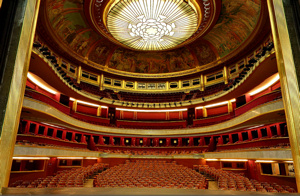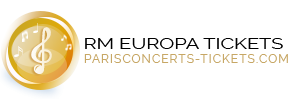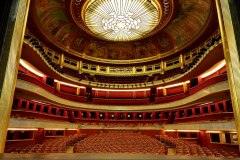Edgar Moreau, David Kadouch
May 2026 | ||||||
|---|---|---|---|---|---|---|
Mo | Tu | We | Th | Fr | Sa | Su |
Edgar Moreau and David Kadouch explore lesser-known works by Rachmaninov, Dvořák, and Chopin.
While his piano concertos are staples of the symphonic repertoire, Rachmaninov's chamber music catalogue remains largely unknown. The two cello pieces in tonight's program are therefore more than welcome. His style, romantic by nature, is a reflection of his introverted personality. His Cello Sonata Op. 19, undoubtedly the most famous piece in his catalogue, dates from the summer of 1901 and is contemporary with his Piano Concerto No. 2. Although the cello was not his preferred instrument, the composer manages to highlight its exceptional nuances and has created a rich dialogue between the two instruments. Our two performers will remain in Slavic territory with an excerpt from Dvořák's Gypsy Songs, originally composed for piano and tenor voice, where here the cello will subtly take the place of the human voice. Like Rachmaninov, Chopin wrote very little for the cello, yet his Sonata Op. 65 belongs among the great works written for the instrument and stands up to those of Beethoven, Mendelssohn, or Brahms. We thank Edgar Moreau and David Kadouch for immersing us in these rarely performed works.
Program and cast
Edgar Moreau, cello
David Kadouch, piano
Programme
Rachmaninov Mélodie for cello and piano op. 21 no. 9
Dvořák Gypsy Songs op. 55 no. 4
Rachmaninov Cello and Piano Sonata
Chopin Cello and Piano Sonata
Théâtre des Champs-Élysées

The Théâtre des Champs- Elysées is undoubtedly one of the finest venues in Paris . Built in 1913 , it has the distinction of having been designed by a group of artists architects Henry Van de Velde and Auguste Perret , the painter and sculptor Antoine Bourdelle , the painter Maurice Denis , and the crystal- René Lalique to do mention the main ones . He was the first Parisian theater to be built entirely of reinforced concrete.
Restoration of the Great Hall devoted to operatic performances , symphony concerts and dance was decided in 1985. Two years later , on 23 September 1987, the theater reopened its doors , completely renovated. Fifteen years after this important work it was decided to undertake a new renovation campaign , but to prevent the complete closure of the theater for an entire season , work is now carried by step during the summer . Then it is to replace aging equipment , to remedy wear certain parts of the theater and improve spectator comfort and artists during their visit . Thus in recent years, including the work involved the renovation of marble facade, replacing the carpet in the room with wooden floors , installation of a new fully decorated wooden concert to a significant improvement of acoustics, the orchestra pit and stage below .
The Théâtre des Champs- Elysées is now a modern working tool receiving each year nearly 300,000 spectators and a few thousands of artists and collaborators.
The Théâtre des Champs- Elysées , the jewel of French architecture of the twentieth century, was in 1953 one of the first buildings of contemporary architectural heritage to be classified as historic monuments . Since 1970 the Caisse des Dépôts owns the entire building 15 avenue Montaigne and principal patron of the theater.
For over a century, Théâtre des Champs-Elysées has been the place where the most celebrated artists have come to make their names in Paris. The world’s finest orchestras and world-class soloists have always been a fixture at the Theatre. Théâtre des Champs-Elysées presents more than 200 concerts each year and is renowned for its outstanding performances of all genres, from classical music concerts and staged opera to contemporary dance and jazz.
How to reach us:
Subway: Alma-Marceau (line 9), Franklin D.Roosevelt (line 1), Pont de l’Alma (RER line C)
Bus: n° 42, 63, 72, 80, 92
Taxi station: Place de l’Alma, corner of avenue George V
Car park: Alma George V. The entrance is in front of n° 19, avenue George V
Fixed rate depending on the length of the performance. Payment upon entering.

 EN
EN DE
DE IT
IT FR
FR ES
ES RU
RU JP
JP RO
RO
 Seating plan
Seating plan 